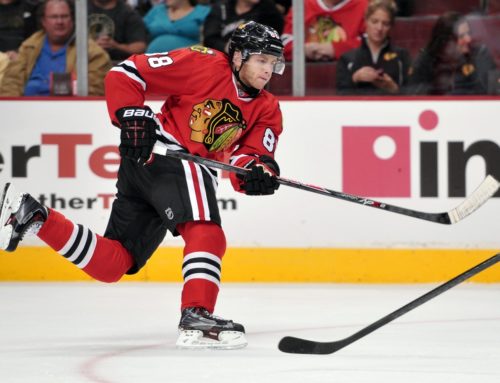
Ville Leino has been one of Philadelphia's best players in the 2010 Stanley Cup Playoffs. He was acquired back in February from Detroit for next to nothing (no offense to Ole-Kristian Tollefsen), and not much was expected of him. He came over to Detroit from Finland in 2008 after recording 77 points in only 58 games for Jokerit of the SM-liiga. He showed flashes of skill during his two years with the Red Wings, but the production wasn't there (only 16 points in 55 games as a Red Wing).
Where does he go from here? Has Leino simply caught fire at the right time of year, or should we be expecting more from him in 2010-11 and beyond?
Leino’s lack of production continued after the trade to Philadelphia. He only scored two goals in 13 regular season games, and was healthy scratched regularly. His first taste of playoff action came in game five against the New Jersey Devils, as he was once again a healthy scratch for the first four games. Since that game, Leino has 12 points in 11 games, and has played less than 13 minutes per game only twice (he played less than 13 minutes in seven of the 13 regular season games after the trade).
Leino (who is only 14 months older than teammate Jeff Carter) will never be mistaken for Marian Gaborik – speed is not is forte. Detroit tried to get him to play more of a power forward game (like Johan Franzen and Dan Cleary), but he likes to make plays with the puck on his stick. He plays the game similarly to former teammate (and at times linemate) Henrik Zetterberg – lots of east-west playing instead of north-south. His shot is decent, his hands are good, and his offensive awareness is excellent.
Ice time is more often than not the great indicator of how a player is performing. Leino has averaged about 16 minutes of ice time per game in the playoffs (in his final 11 games as a Red Wing, he averaged 9:30 per game). He got an opportunity on the second line because of injuries to Simon Gagne and Jeff Carter, and he was able to keep the spot by contributing offensively.
There are players each year that elevate their games in the postseason. John Druce and Fernando Pisani are two examples of this. The playoffs are too small of a sample size to use conclusively to analyze a player, but they do help as an analysis tool if used properly. Leino has been given an opportunity to play a role he feels comfortable in, and he has seized that opportunity and surpassed all expectations.
Peter Laviolette has confidence in Leino, and he continues to put Leino in positions where he can be a difference maker. According to Leino, confidence from the coaching staff in Detroit was very low. "In Detroit I always had a coach or somebody behind my back telling me to do this, do that or don’t do that, and I don’t know if it just didn’t work out there. I’m not blaming anyone because it was a great learning experience, but it just didn’t work out. Now it’s just a different situation.”
Leino also believes that his game is more suited to the style Philadelphia plays. “I like to play offensive and make plays, so I like going hard and being aggressive on the puck,” Leino said. “You don’t have to sit back and wait for something to happen (in the Flyers’ system). It’s aggressive hockey and gets you right on top of things.”
Does Leino become a 5o or 60-point guy next season? If I were a betting man, I'd probably say no. However, this is the first time he has produced and contributed in an important role in the NHL, and the fact he has been able to do it in such important games cannot be overlooked. One of my golden rules in fantasy hockey is that proven production/ability always trumps the unproven. Before this spring, Leino was a player who "could potentially" be a second line player in the NHL one day. In a few short weeks, he has changed into a player who "can" be a second line player in the NHL. He has one year left on his current deal that pays him $800,000 per season. Philadelphia will be welcoming him (and his cap-friendly contract) back with open arms in 2010-11 – that one you can take to the bank.





 MTL
MTL EDM
EDM
 ANA
ANA VAN
VAN OTT
OTT BOS
BOS
